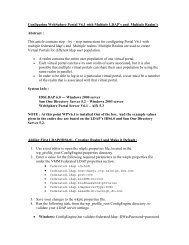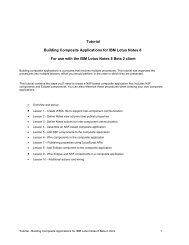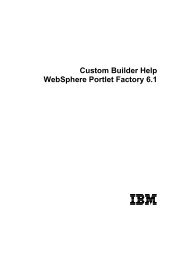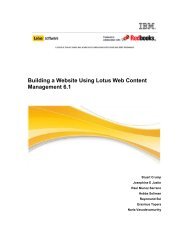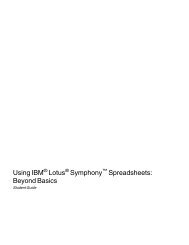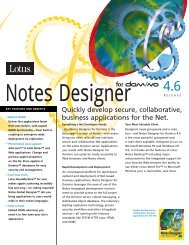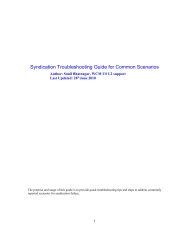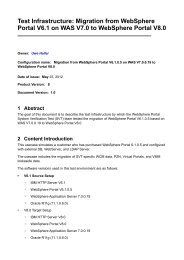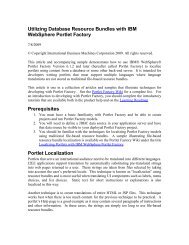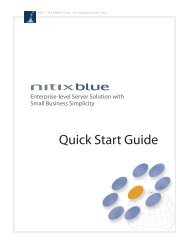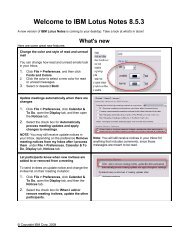IBM WebSphere Portlet Factory Overview - Lotus
IBM WebSphere Portlet Factory Overview - Lotus
IBM WebSphere Portlet Factory Overview - Lotus
Create successful ePaper yourself
Turn your PDF publications into a flip-book with our unique Google optimized e-Paper software.
• Can transform data from the structures used by the back-end system buildercalls into the desired structures for the service being defined.Step 5: Test the model by running it.Use the auto-generated test harness to ensure that service is operational. Remember,you need to select the Add testing support option in the Service Definition builder inorder for this to work. In addition, if your service takes inputs, you can set default inputvalues in the Service Definition builder, by selecting Specify Default Inputs in theTesting Support section.Step 6: Add additional operations to your service.It is often useful to define a service with multiple, related operations. Sometimes thedata sources can even come from more than one back-end system. For example, acustomer information service can define operations to return a customer list (based onsearch criteria), customer detailed information, customer orders, customer complaints,and so on.If you want to expose multiple operations in your service, then you will need to addadditional data integration builders and service operation builders to your model for eachoperation that you want to include in your service. For the orders example described inStep 4, you might want to add another operation called getOrdersbyCustomer, whichwill return all of the orders for a given customer. To add this operation, you would add aSQL builder that defines the query (since the data in this example comes from adatabase) and then add another Service Operation builder that wraps this latest SQLcall execute method as a service.Step 7: Generate a stub model.After your initial service is tested, you might want to generate a stub model, which is anentirely self-contained model that declares the same service, operations, schemas, andso on, as the original service, but which does not require back-end access. To generatea stub, simply provide a name for your stub model and click Generate Stub in theService Definition builder.Stub models are often very useful for team development projects, where there are somedevelopers creating the back-end access and others who are creating the front-end forthe portlets. For example, assume a user interface developer needs a service you aredeveloping in order to start working on her portlet. You can generate a stub and give it tothe user interface developer. This stub can easily be swapped out for the final servicewhen it is complete. Stub models are also useful when your back-end system is slow inresponding or has limited availability. By using stubs, you will save considerable timebecause the stub model does not need to access the slow back-end system for everyregeneration cycle.Additional featuresThis section provided a high-level overview of the most common steps used to createdata services. Periodically, you will need to perform additional steps to create your dataservices, which may include transforming the data, performing some pre- or postprocessingactions, and adding error handling. Common builders used for these types oftasks include Action List, Error Handler, and Linked Java Object builder.<strong>WebSphere</strong> <strong>Portlet</strong> <strong>Factory</strong> V6.0.1 Getting Started Guide - 14 -



